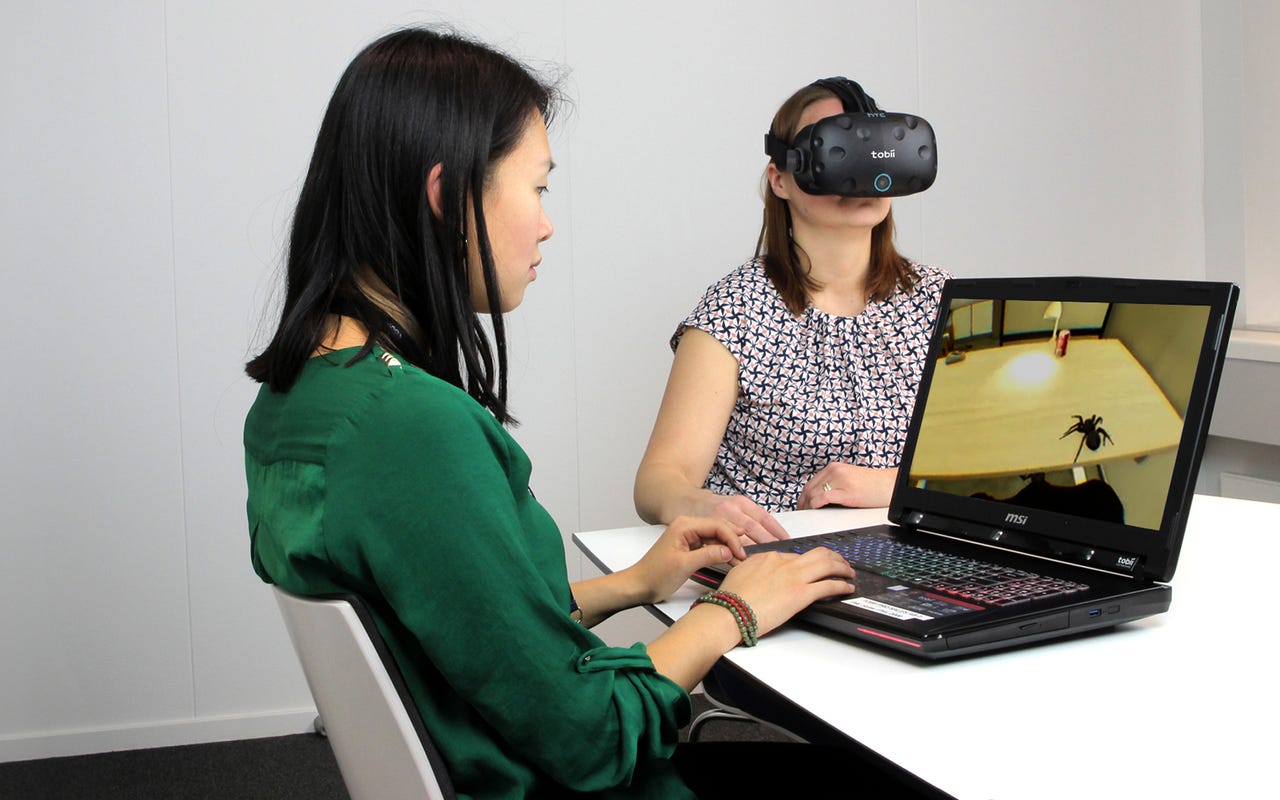Tobii Pro brings eye-tracking research to VR


VR with eye-tracking could potentially be used to for exposure therapy, during which a patient is confronted with their fears.
Eye-tracking technology can help build an immersive experience in virtual reality, prompting an avatar to look back at you if you look in its direction or giving an indication of which scenes to render.
It's also becoming apparent that eye tracking within VR can have a role to play in helping to understand human behavior. Tobii Pro, the research-focused arm of the eye-tracking company Tobii, is tapping into that potential with a new integration with the HTC Vive business edition headset.
The tool is capable of eye tracking all types of eyes, collecting binocular eye tracking data at 120 Hz (images per second). Aimed at both commercial and scientific researchers, it comes with the Tobii Pro software development kit (SDK) for research applications. The SDK supports millisecond synchronization, enabling researchers to extract the data from the eye tracker and analyze it on a Unity-compatible software platform. They can collect and track data from both live interactions and after a subject has used the headset.
The commercial and academic applications are broad and effectively mirror the ways Tobii Pro's eye-tracking technology is already used for research purposes.
"You could argue this could be done without the virtual reality because you could do this in the real world, but VR makes it possible to study much more iteratively, much more quickly and much more effortlessly than in the real world," Tobii Pro president Tom Englund told ZDNet. "You can alter scenes, build up controlled scenarios in ways you couldn't do in the physical world, creating a completely new realm of research possibilities."
For instance, retailers could create a VR experience to simulate a store environment, so they can draw conclusions about where the shoppers' eyes are drawn and which parts of the store appeal to them. With VR, the retailer can set up multiple, alternative environments to test without putting in the time and money of setting up real store displays.
Eye-tracking can also play an important role psychological research. For instance, VR is a useful tool for exposure therapy, during which a patient is confronted with their fears. Using eye tracking, a researcher can learn more about how the patient reacts to those stimuli.
Tobii Pro also sees significant potential in expanding professional skills training with eye tracking and VR. For instance, a doctor's eye movements could be tracked while he's performing surgery, and that data could be used to develop training material for novices.
While VR is still in nascent stages of development, Englund said he's confident its research applications will be realized.
"Because of the benefits, the efficiency of the testing, the fact you can do iterative testing in a much better environment than than you would in a real world, create situations that wouldn't be possible in the real world," he said. "I think adoption will grow quite fast in this area."